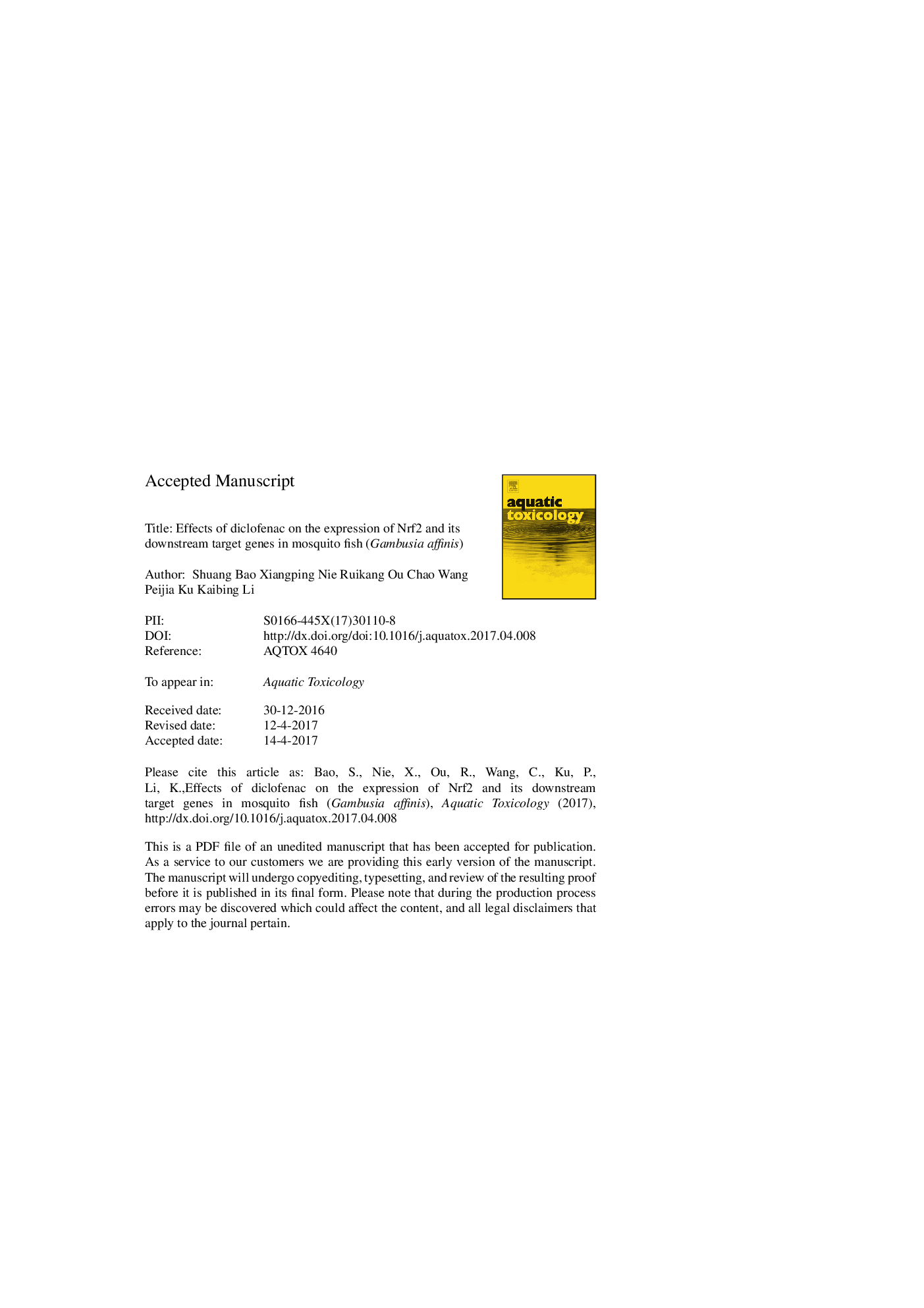| Article ID | Journal | Published Year | Pages | File Type |
|---|---|---|---|---|
| 5764220 | Aquatic Toxicology | 2017 | 25 Pages |
Abstract
Diclofenac (DCF) is one of widely used non-steroidal anti-inflammatory drugs. Recently, this drug has been universally detected in aquatic environment. However, its potential adverse effects and oxidative stress toxic mechanisms on fish remain unclear. In the present study, we first cloned the crucial partial sequences of some key oxidative stress related genes, which include NF-E2-related factor 2 (Nrf2), NAD(P)H: quinoneoxidoreductase (NQO1), glutamate-cysteine ligase catalytic subunit (GCLC), Cu-Zn superoxide dismutase (SOD2), catalase (CAT), alpha-glutathione S-transferase (GSTA), and UDP-glucuronosyltransferases (UGT) in mosquito fish (Gambusia affinis). We also deduced amino acids of Nrf2 and then constructed the phylogenetic trees of Nrf2, NQO1 and GCLC, respectively. Results showed that a high identity percentage was founded between G. affinis and other bony fish species, such as Xiphophorus maculates and Poecilia reticulate. The transcriptional expression of these genes and partly related enzymes activities were then investigated under the included environmental relevant concentration DCF exposure (0 μmol Lâ1, 1.572 Ã 10â3 μmol Lâ1, 1.572 Ã 10â2 μmol Lâ1, 0.1572 μmol Lâ1 and 1.572 μmol Lâ1) for 24 h and 168 h. The expression of Nrf2 was inhibited at 24 h but induced at 168 h, exhibiting a significant time and/or dose-effect relationship under DCF exposure. Similar observation was found in its downstream target genes. However, Nrf2-mediated antioxidant enzymes activities displayed differently under the same concentration of DCF exposure for the same time. Under DCF exposure for 168 h, the genes exhibited dramatic induction trend, but there were no significant changes in enzyme activities and MDA content. Overall, mRNA responses were more sensitive than enzyme changes in mosquito fish under DCF exposure.
Keywords
Related Topics
Life Sciences
Agricultural and Biological Sciences
Aquatic Science
Authors
Shuang Bao, Xiangping Nie, Ruikang Ou, Chao Wang, Peijia Ku, Kaibing Li,
